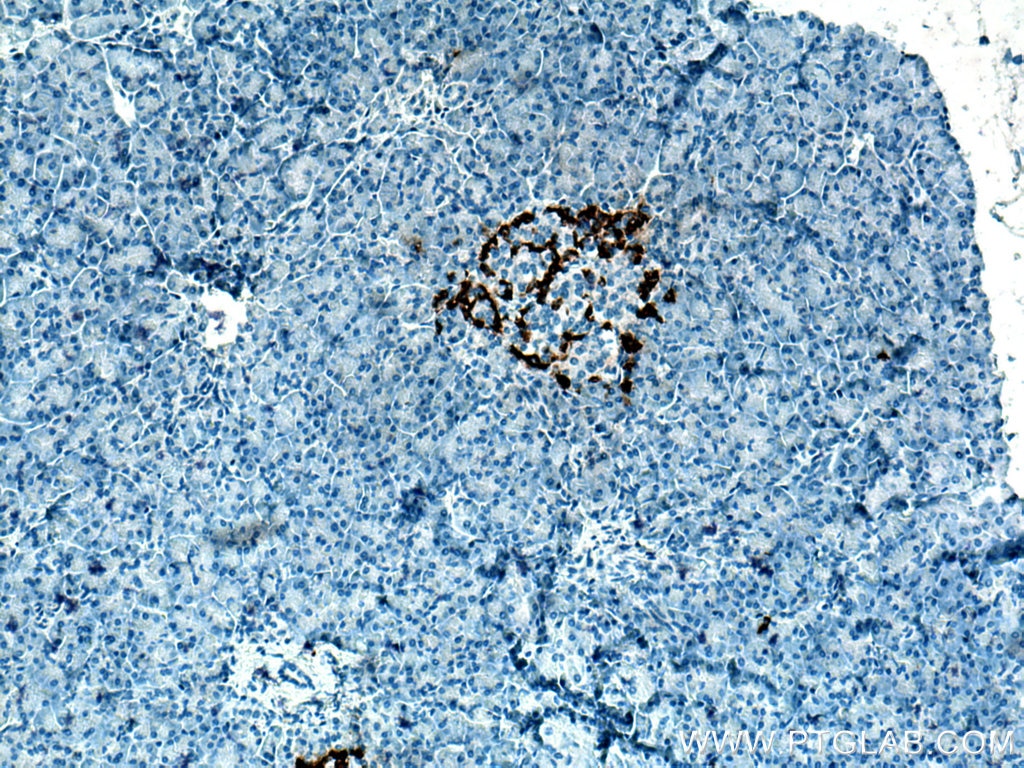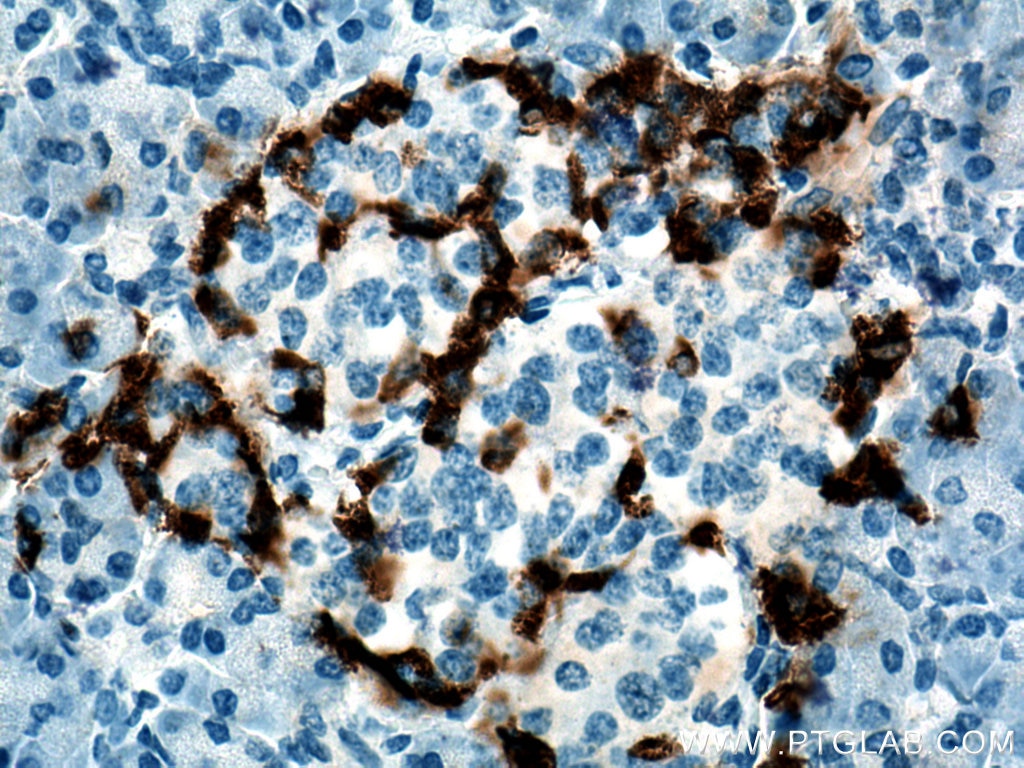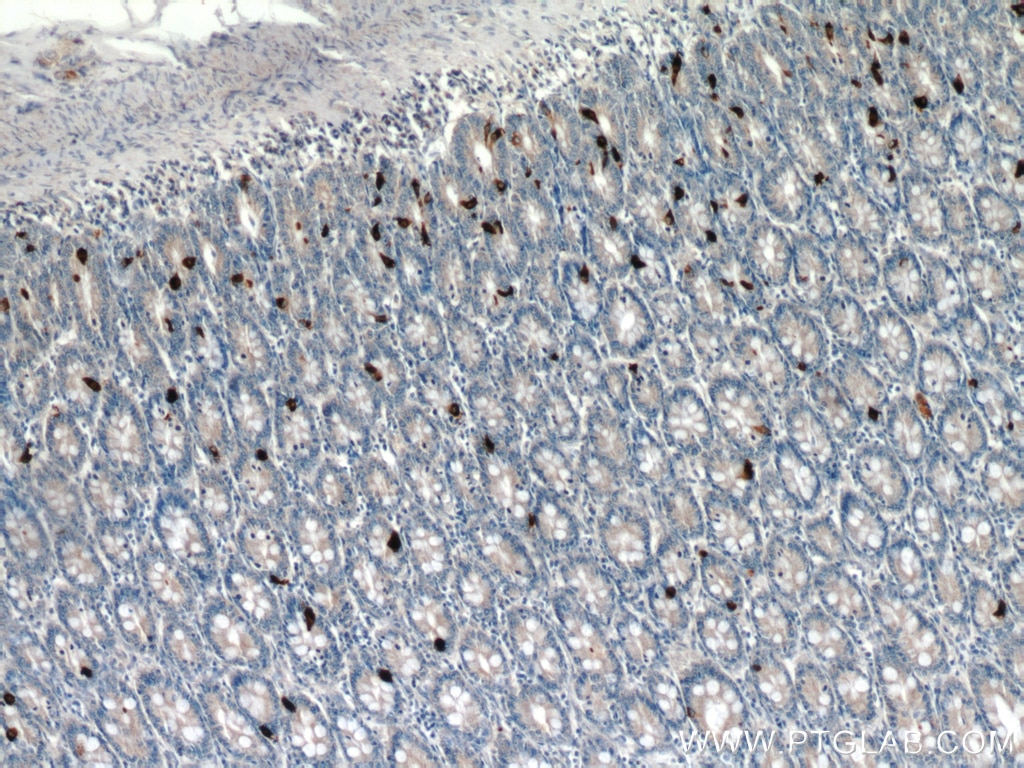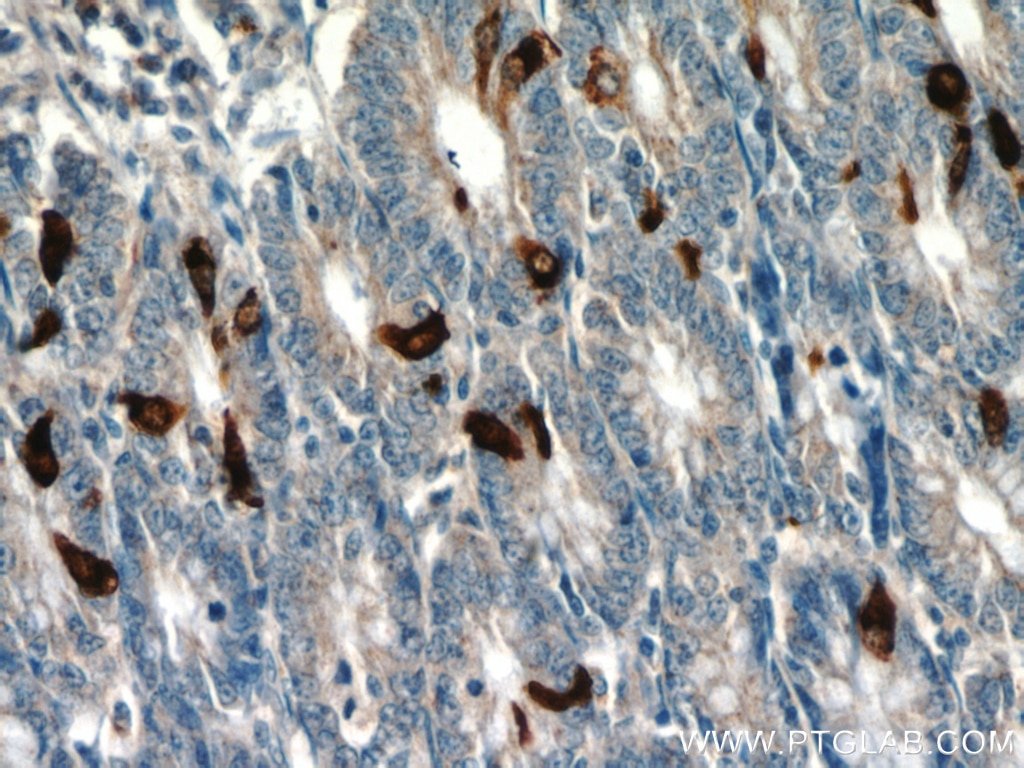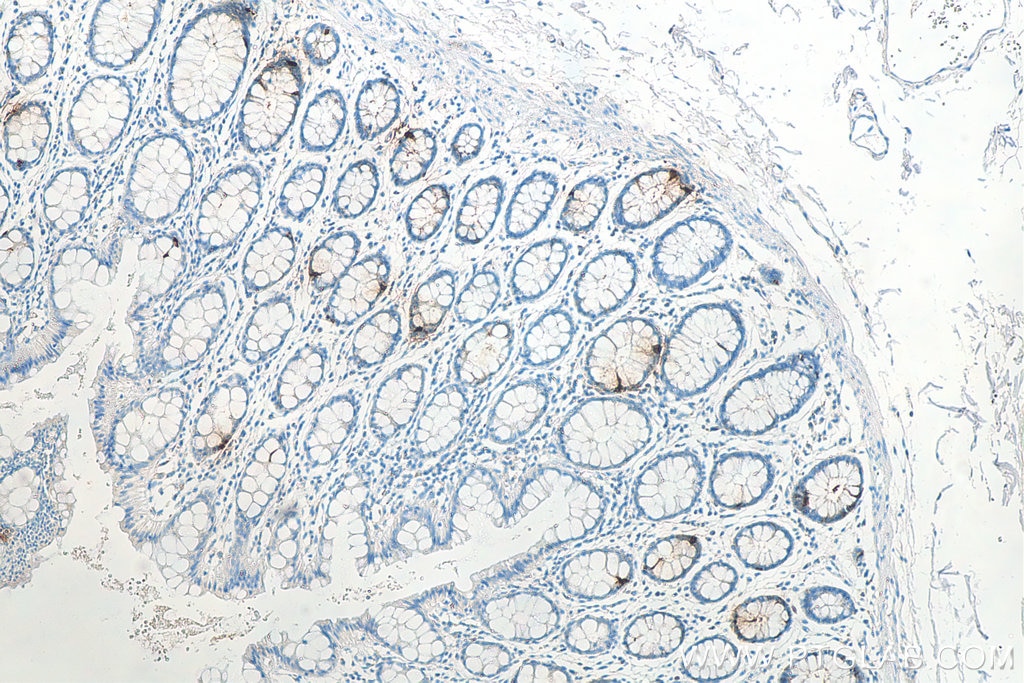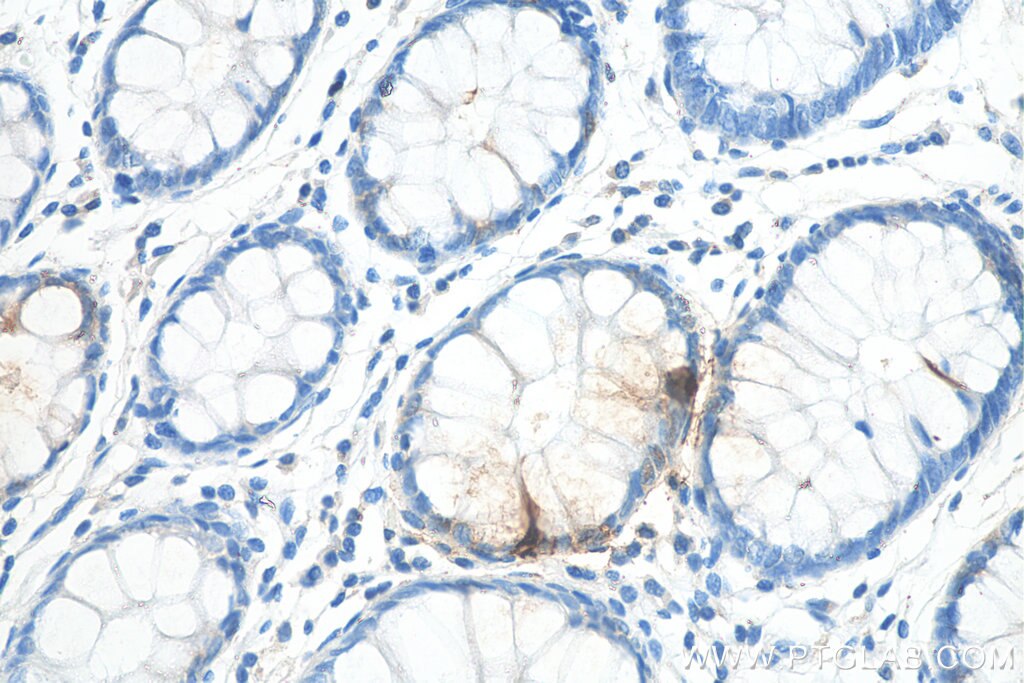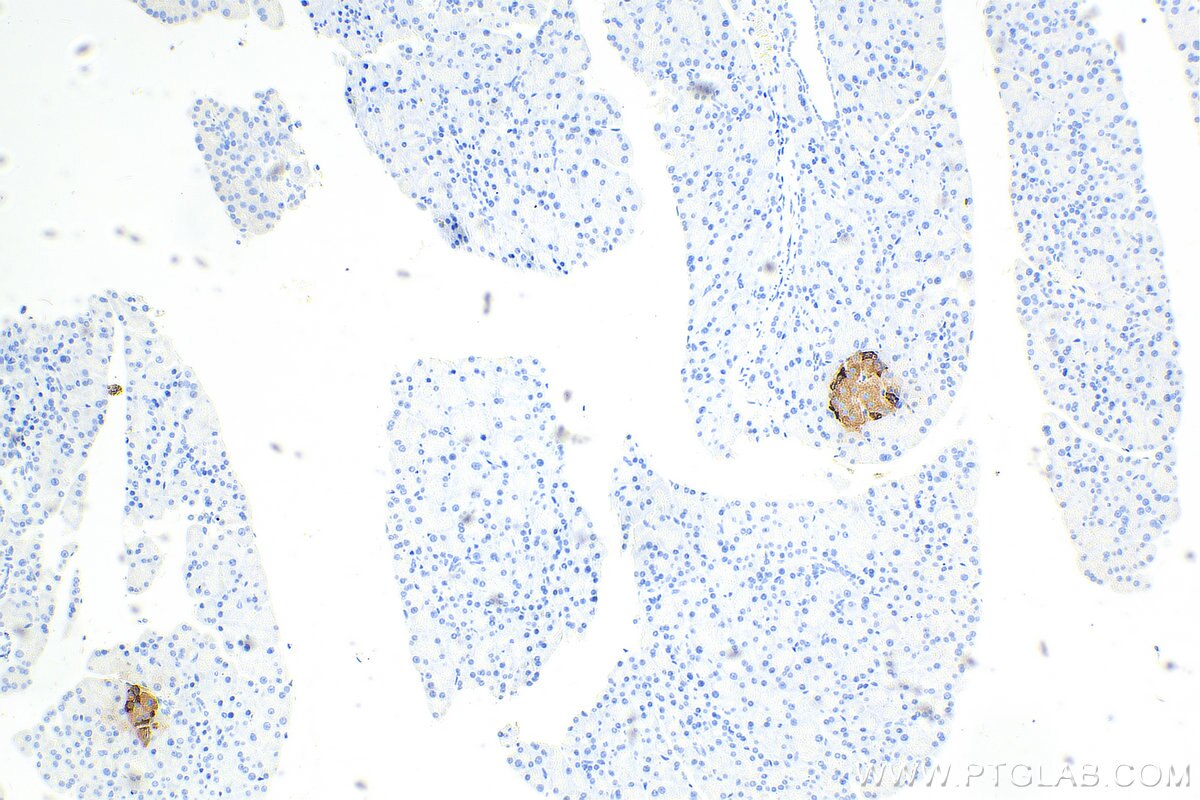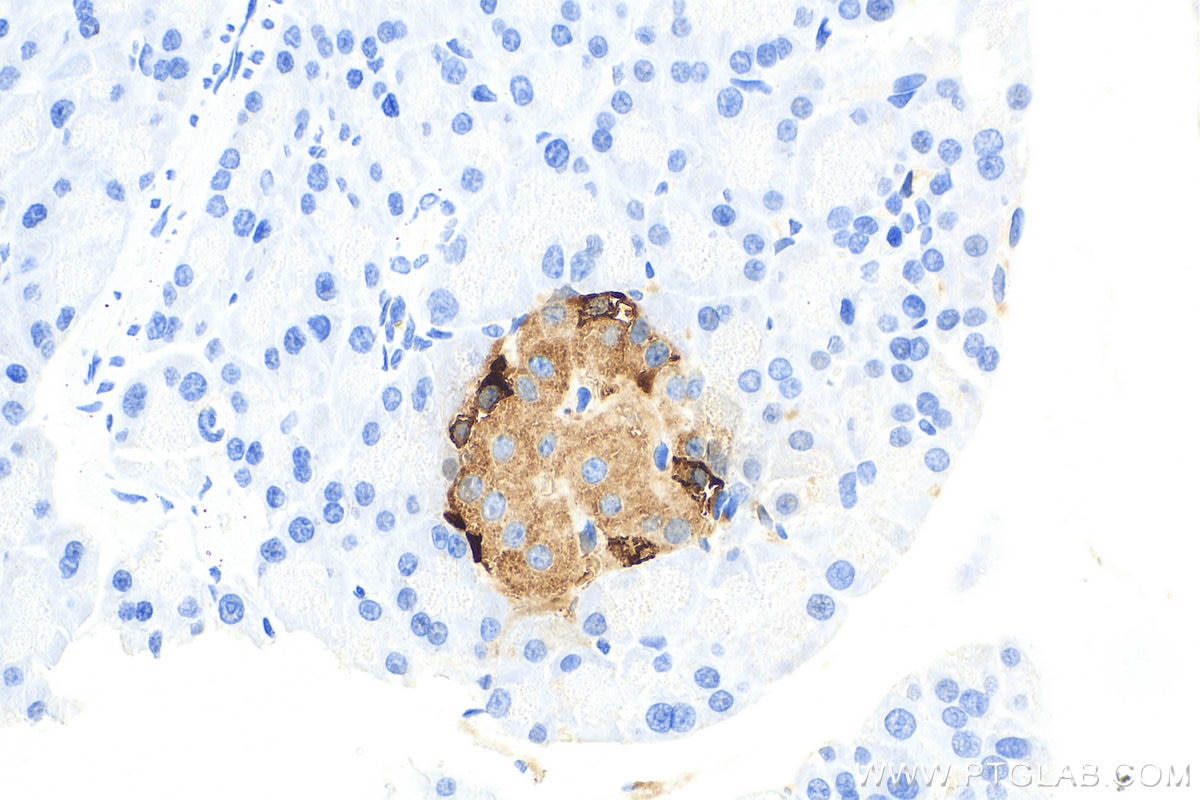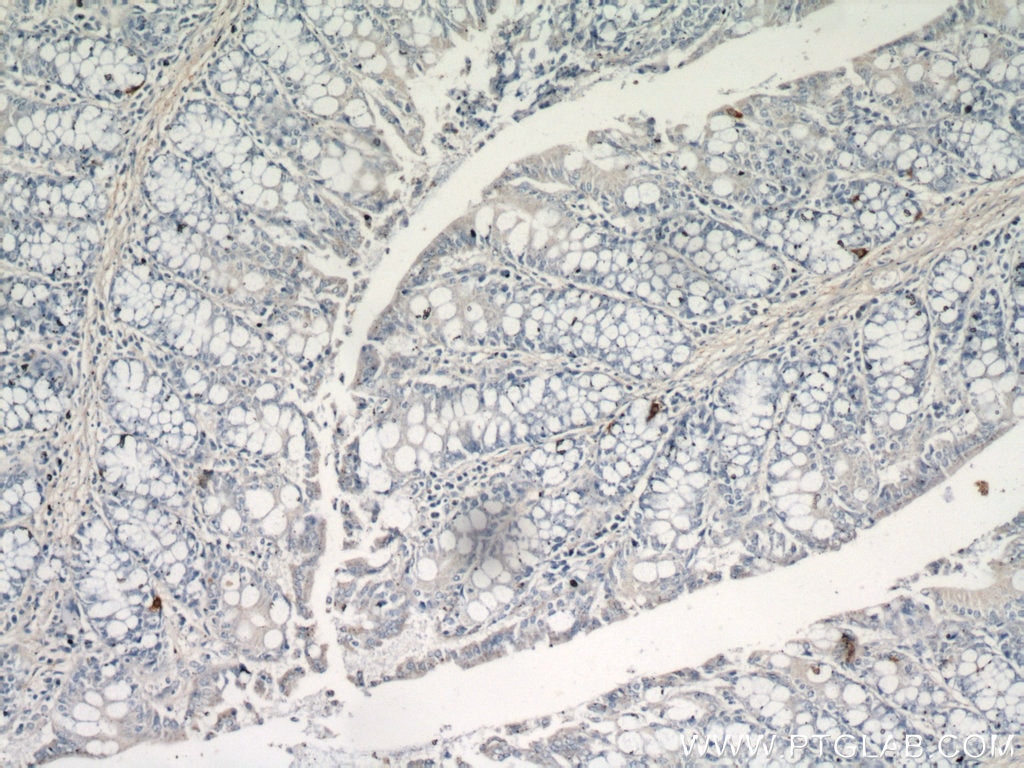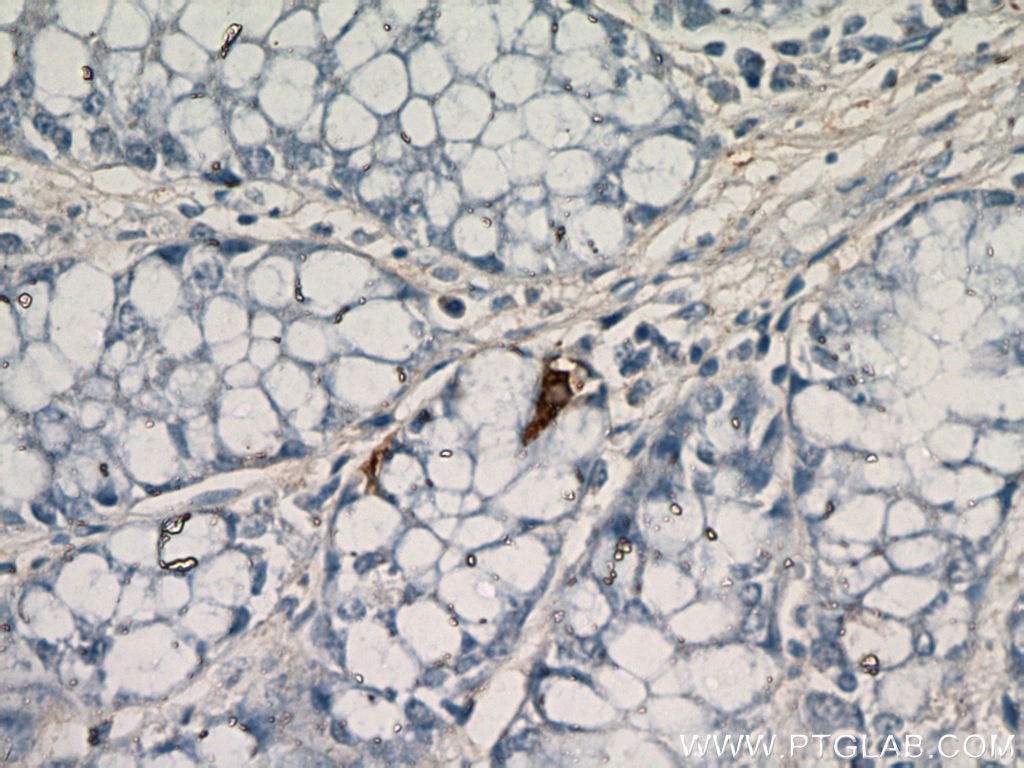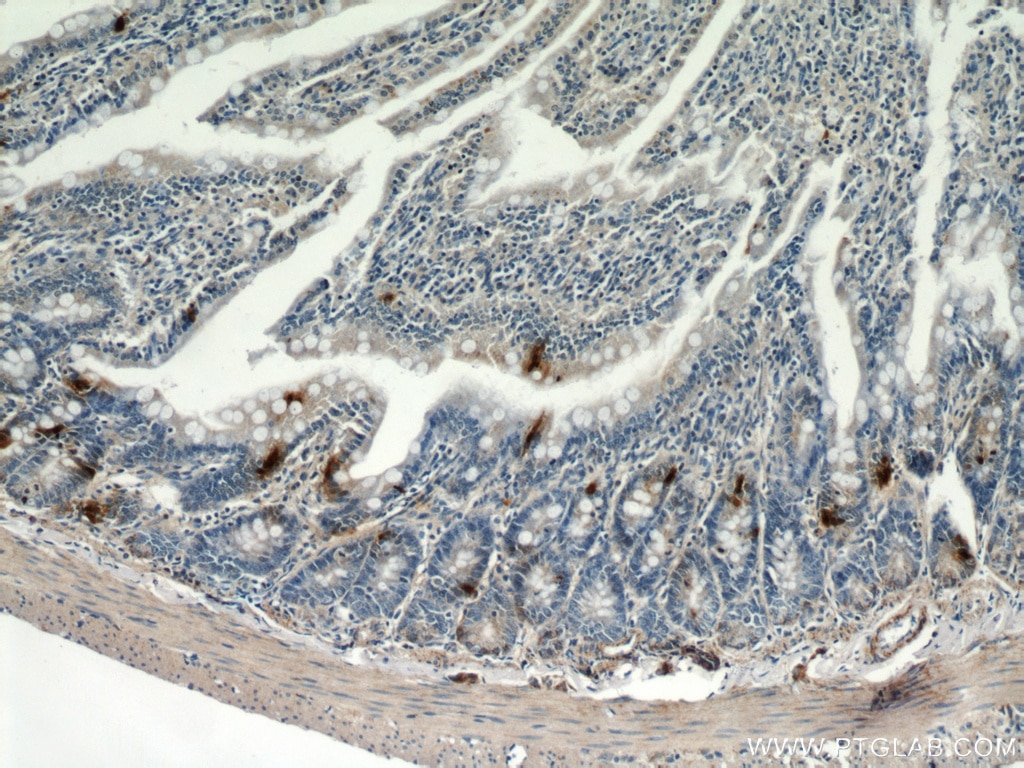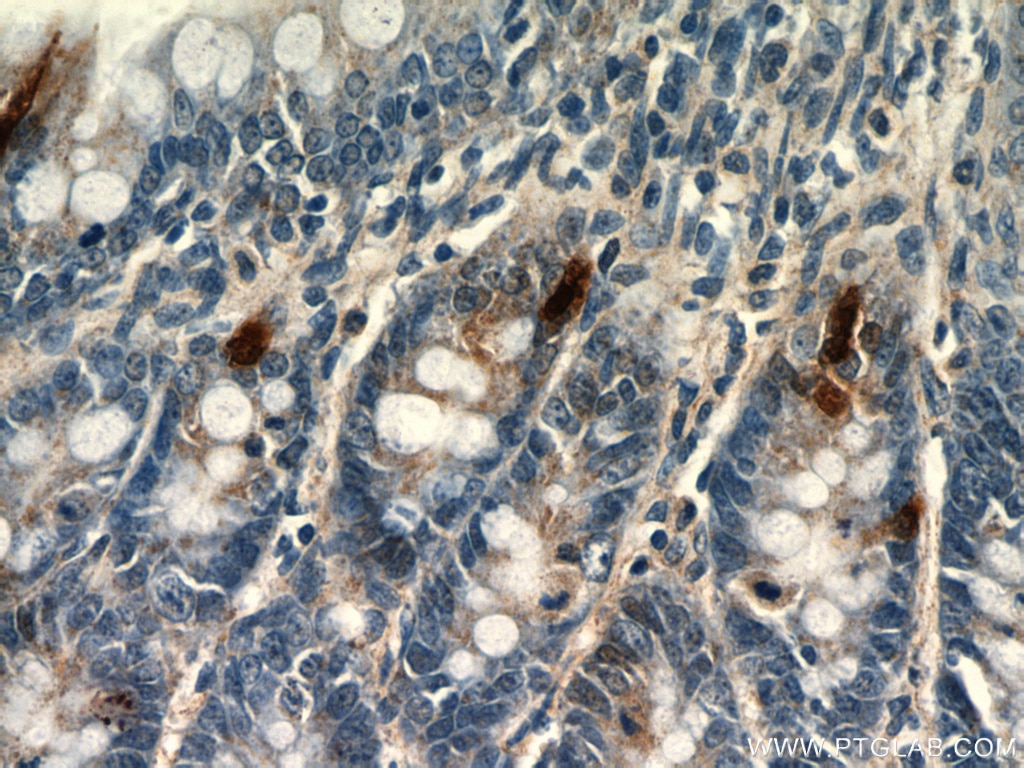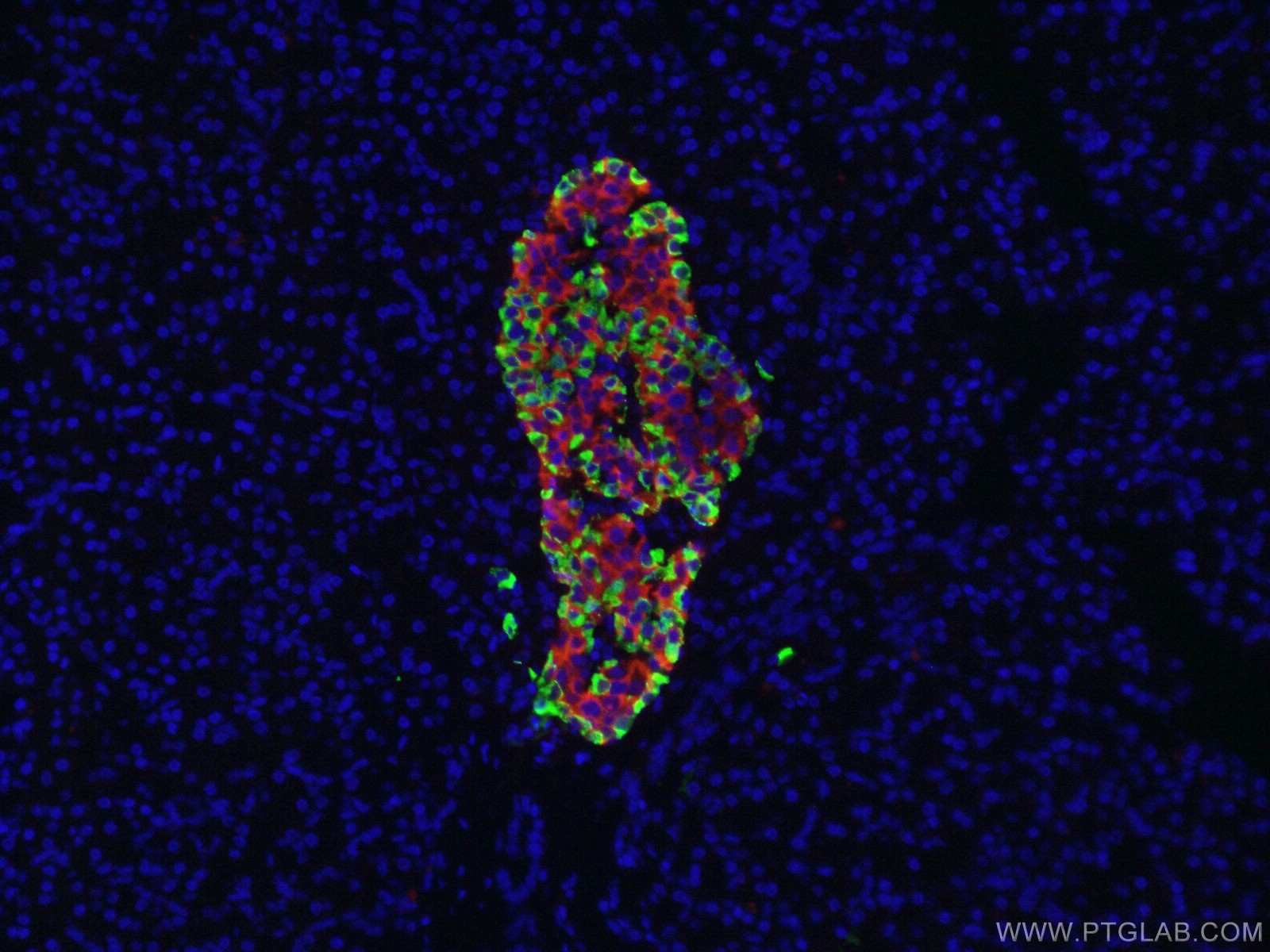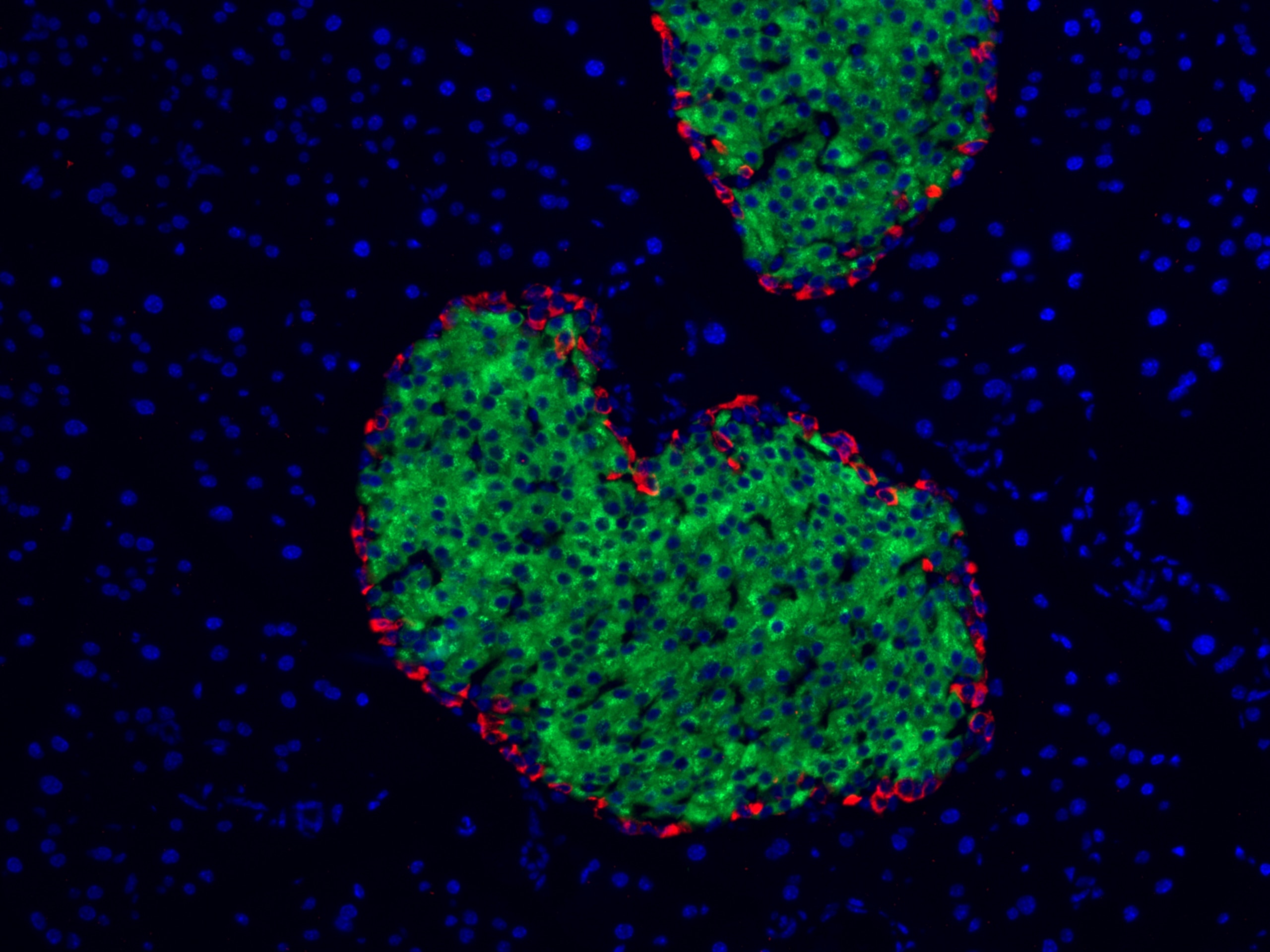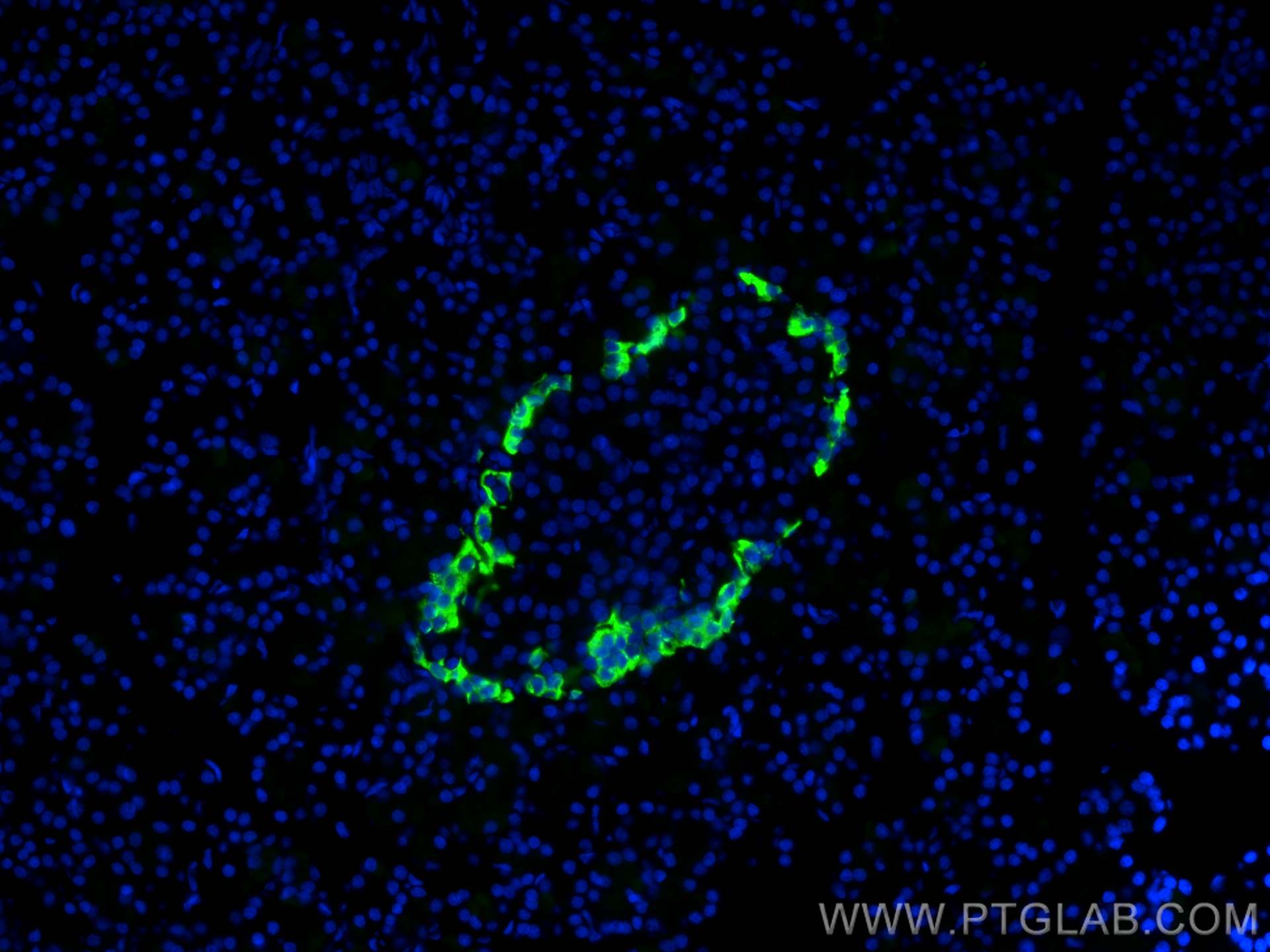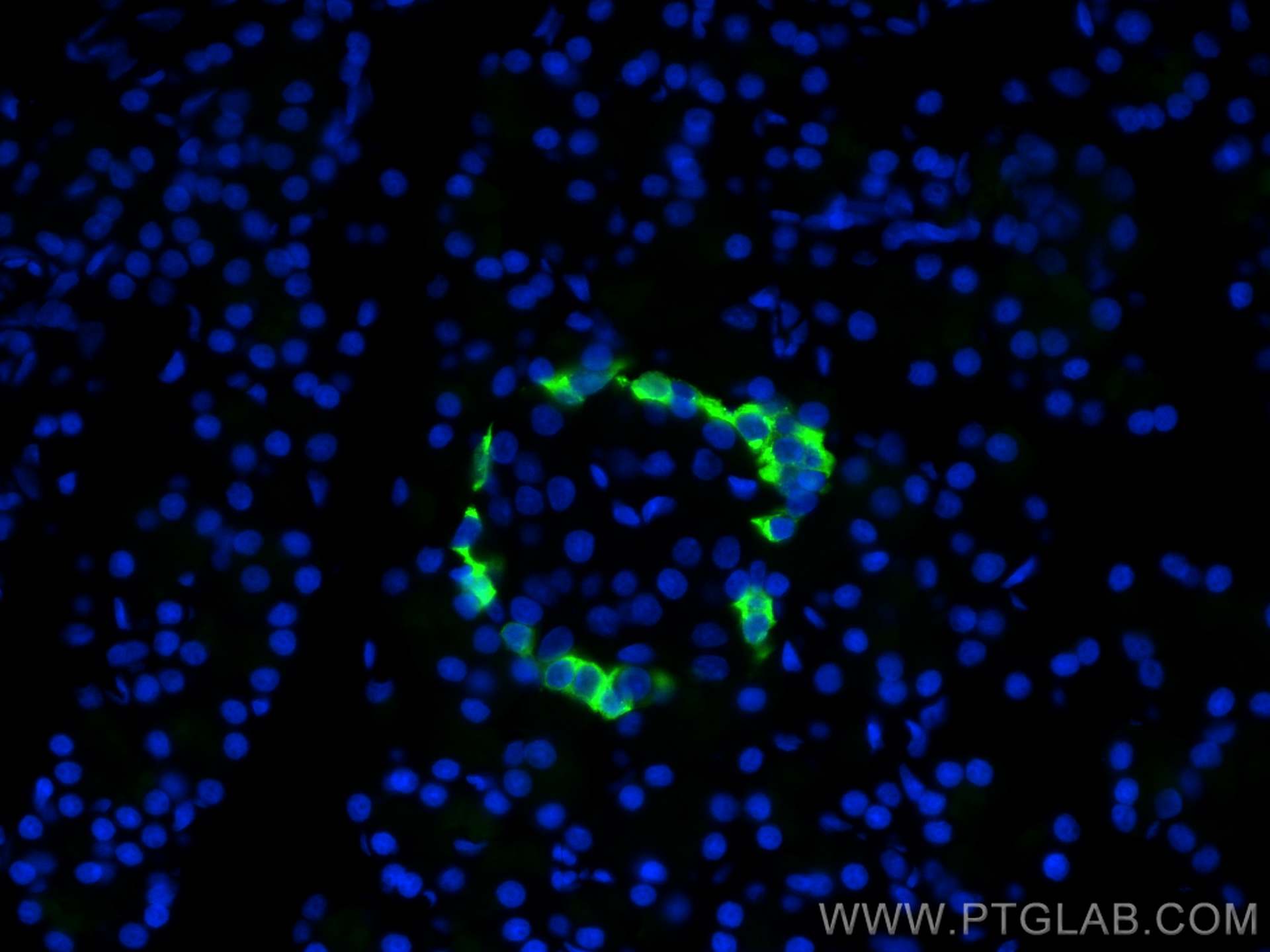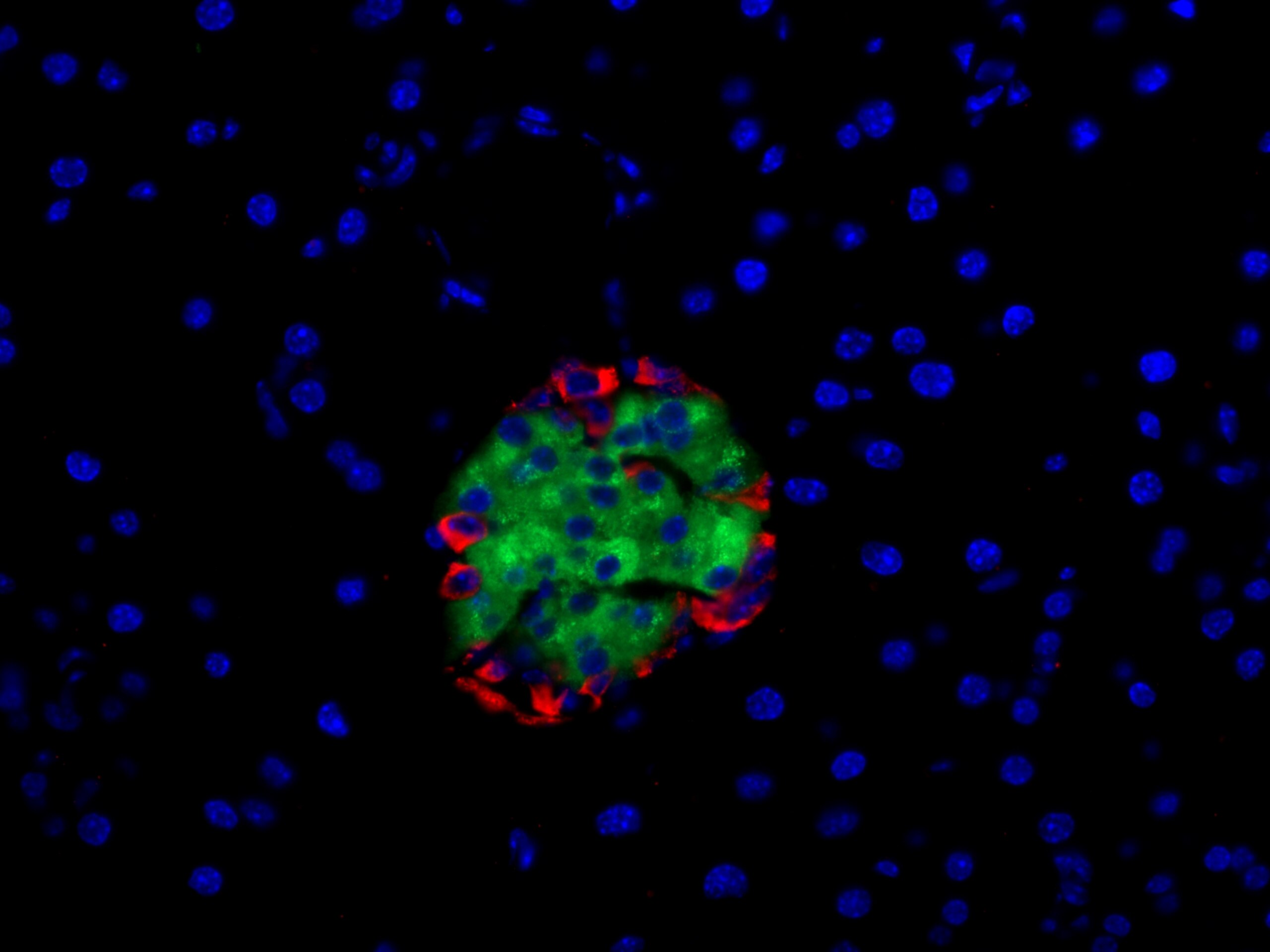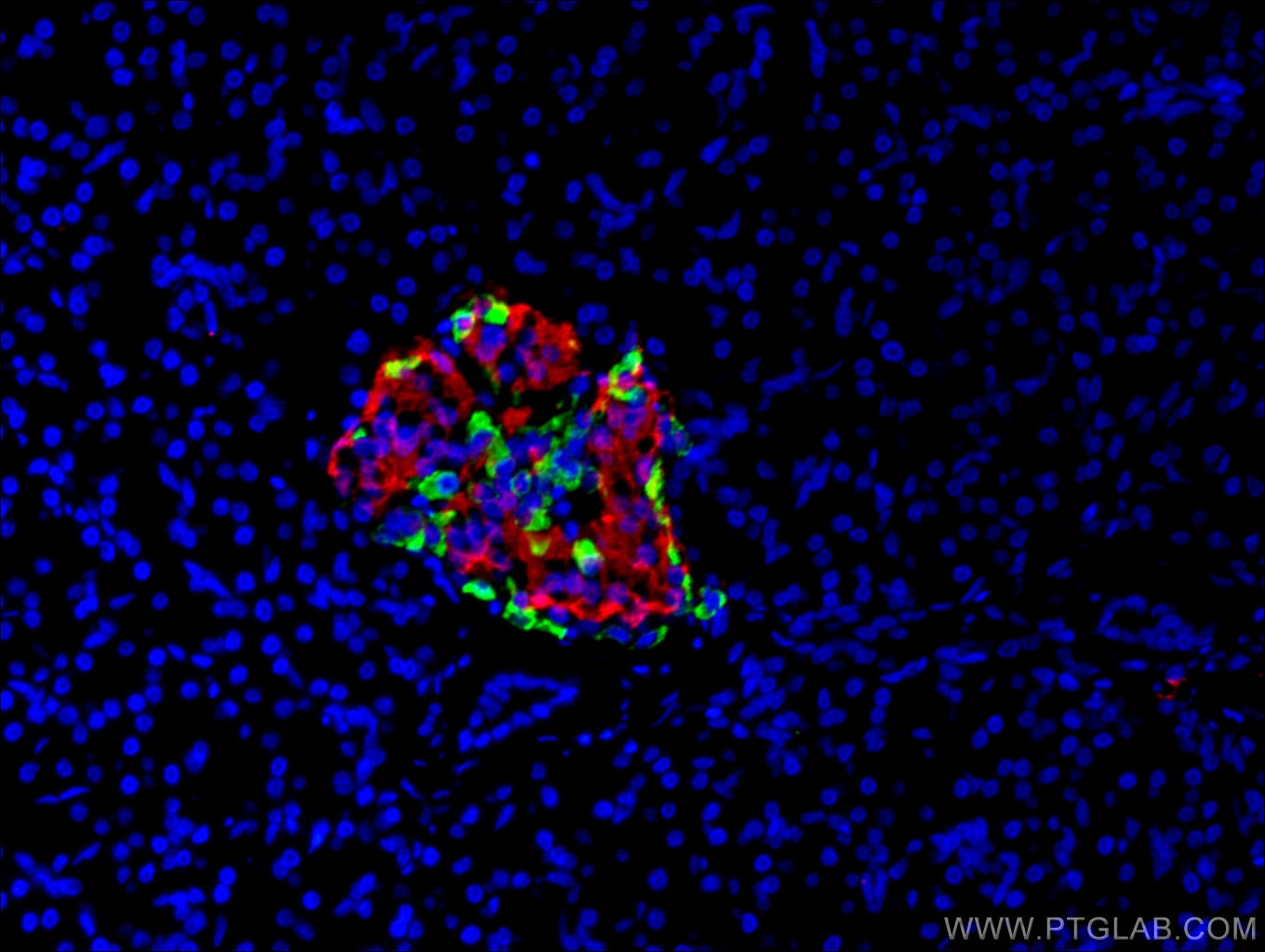Glucagon Polyklonaler Antikörper
Glucagon Polyklonal Antikörper für IHC, IF-P, ELISA
Wirt / Isotyp
Kaninchen / IgG
Getestete Reaktivität
human, Maus, Ratte
Anwendung
WB, IHC, IF-P, ELISA
Konjugation
Unkonjugiert
Kat-Nr. : 15954-1-AP
Synonyme
Geprüfte Anwendungen
| Erfolgreiche Detektion in IHC | humanes Pankreasgewebe, humanes Kolongewebe, humanes Dünndarmgewebe, Maus-Dünndarmgewebe, Ratten-Pankreasgewebe Hinweis: Antigendemaskierung mit TE-Puffer pH 9,0 empfohlen. (*) Wahlweise kann die Antigendemaskierung auch mit Citratpuffer pH 6,0 erfolgen. |
| Erfolgreiche Detektion in IF-P | Maus-Pankreasgewebe, humanes Pankreasgewebe, Ratten-Pankreasgewebe |
Empfohlene Verdünnung
| Anwendung | Verdünnung |
|---|---|
| Immunhistochemie (IHC) | IHC : 1:12800-1:51200 |
| Immunfluoreszenz (IF)-P | IF-P : 1:200-1:800 |
| It is recommended that this reagent should be titrated in each testing system to obtain optimal results. | |
| Sample-dependent, check data in validation data gallery | |
Veröffentlichte Anwendungen
| WB | See 3 publications below |
| IHC | See 13 publications below |
| IF | See 38 publications below |
| ELISA | See 1 publications below |
Produktinformation
15954-1-AP bindet in WB, IHC, IF-P, ELISA Glucagon und zeigt Reaktivität mit human, Maus, Ratten
| Getestete Reaktivität | human, Maus, Ratte |
| In Publikationen genannte Reaktivität | human, Maus, Ratte |
| Wirt / Isotyp | Kaninchen / IgG |
| Klonalität | Polyklonal |
| Typ | Antikörper |
| Immunogen | Glucagon fusion protein Ag8677 |
| Vollständiger Name | glucagon |
| Berechnetes Molekulargewicht | 180 aa, 21 kDa |
| GenBank-Zugangsnummer | BC005278 |
| Gene symbol | Glucagon |
| Gene ID (NCBI) | 2641 |
| Konjugation | Unkonjugiert |
| Form | Liquid |
| Reinigungsmethode | Antigen-Affinitätsreinigung |
| Lagerungspuffer | PBS with 0.02% sodium azide and 50% glycerol |
| Lagerungsbedingungen | Bei -20°C lagern. Nach dem Versand ein Jahr lang stabil Aliquotieren ist bei -20oC Lagerung nicht notwendig. 20ul Größen enthalten 0,1% BSA. |
Hintergrundinformationen
Background
Glucagon is a protein cleaved from a precursor protein encoded by the GCG gene. The distinct peptides formed from this precursor include Glucagon, Glucagon-Like Peptide 1 (GLP-1), Glucagon-Like Peptide 2 (GLP-2), and oxyntomodulin. Glucagon is essential in maintaining blood glucose homeostasis and therefore has a key role in Type 1 and Type 2 diabetes.
What is the molecular weight of Glucagon?
21 kDa. Glucagon is composed of 180 amino acids and is a ligand for a specific G-protein coupled receptor (GPCR).
Where is it expressed?
Glucagon is a hormone secreted by the pancreas, in the α cells of the islets of Langerhans (PMID: 18880761). GLP-1, GLP-2, and oxyntomodulin are secreted by gut endocrine cells of the GI tract and also by selected neurons in the brain. These secreted proteins are transported to the target organ in plasma.
What is the function of glucagon?
The regulation of blood glucose levels is controlled by a balance of the hormones INS and glucagon in a negative feedback loop. A drop in blood glucose, or hypoglycemia, stimulates the release of glucagon. This initiates a cascade of signals, ultimately causing the conversion of stored glycogen into free glucose in a process called glycogenolysis, which takes place in liver and muscle cells. Glucagon can also stimulate gluconeogenesis in the liver, the process of forming glucose from non-carbohydrate sources such as amino acids (PMID: 13477815).
What diseases are associated with glucagon?
Glucagon is key in homeostasis of blood glucose and maintaining the balance between hyperglycaemia and hypoglycemia. It is therefore important in the study of Type 1 and Type 2 diabetes mellitus, where dysfunction of the pancreatic cells leads to a deregulation of blood glucose levels (PMID: 19326096). In both forms of the disease, glucagon secretion is impaired, from too much being secreted during hyperglycaemia, to too little being released to normalize hypoglycemia (PMID: 18197838).
Protokolle
| PRODUKTSPEZIFISCHE PROTOKOLLE | |
|---|---|
| IHC protocol for Glucagon antibody 15954-1-AP | Protokoll herunterladenl |
| IF protocol for Glucagon antibody 15954-1-AP | Protokoll herunterladen |
| STANDARD-PROTOKOLLE | |
|---|---|
| Klicken Sie hier, um unsere Standardprotokolle anzuzeigen |
Publikationen
| Species | Application | Title |
|---|---|---|
J Pineal Res Paternal sleep deprivation induces metabolic perturbations in male offspring via altered LRP5 DNA methylation of pancreatic islets | ||
Elife Multifaceted secretion of htNSC-derived hypothalamic islets induces survival and antidiabetic effect via peripheral implantation in mice. | ||
Rezensionen
The reviews below have been submitted by verified Proteintech customers who received an incentive for providing their feedback.
FH kk (Verified Customer) (11-21-2018) | very strong and specific staining in mouse pancreas tissues
|
